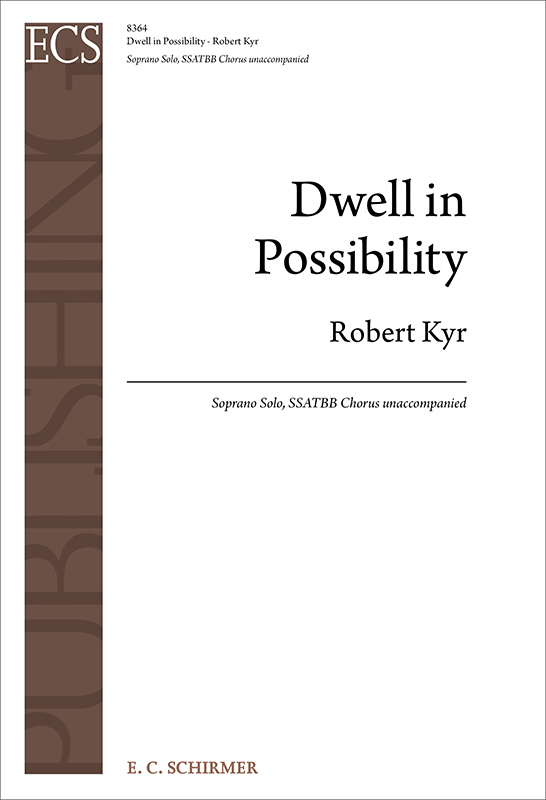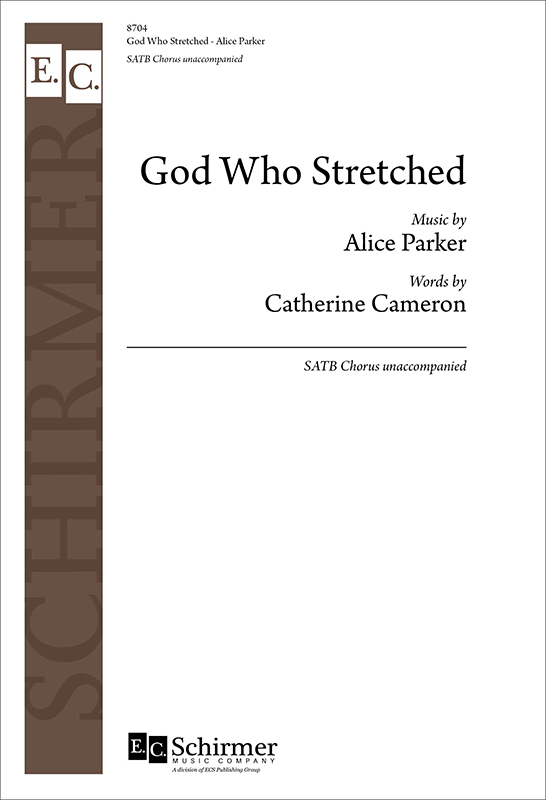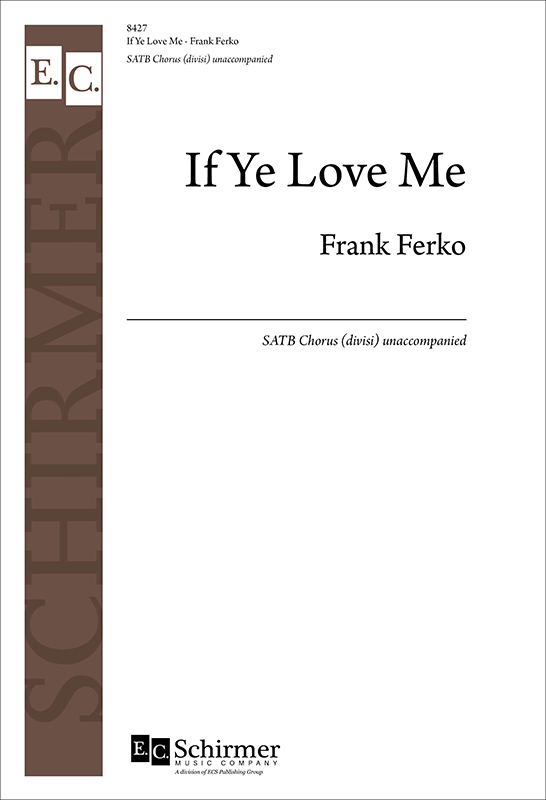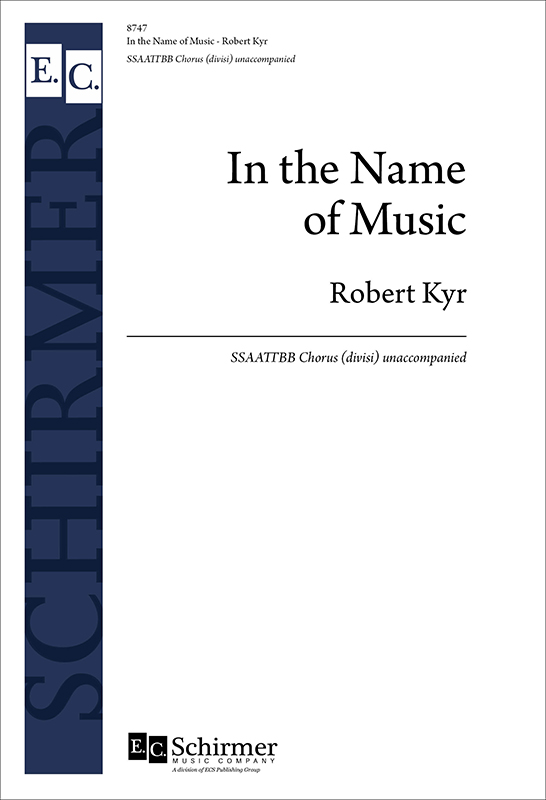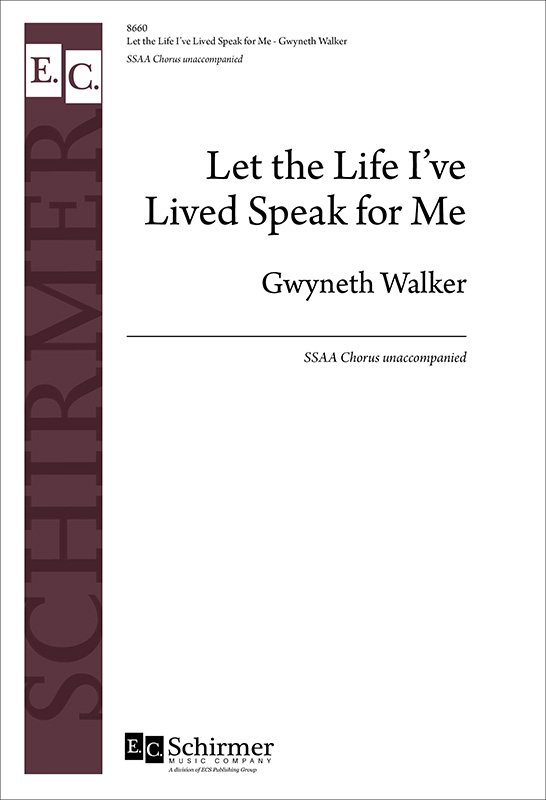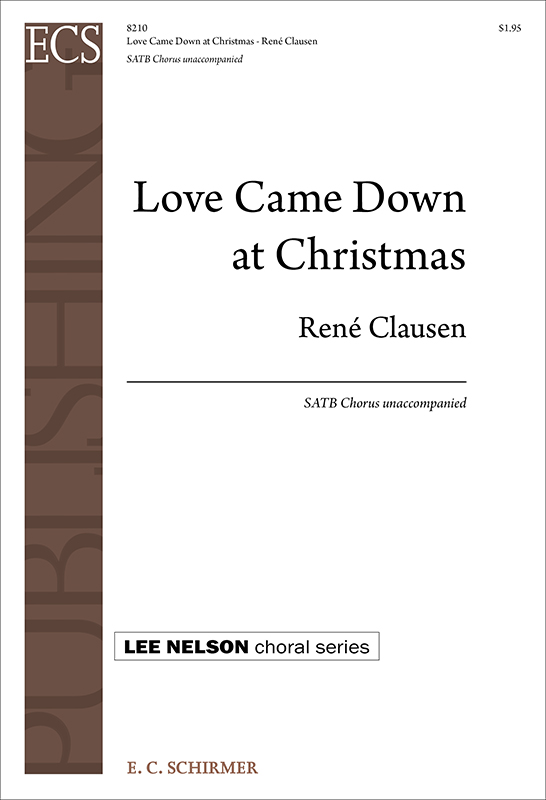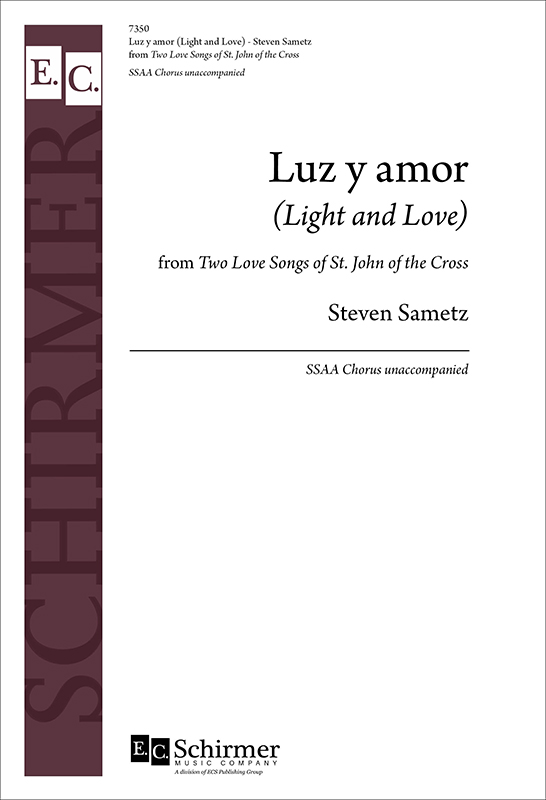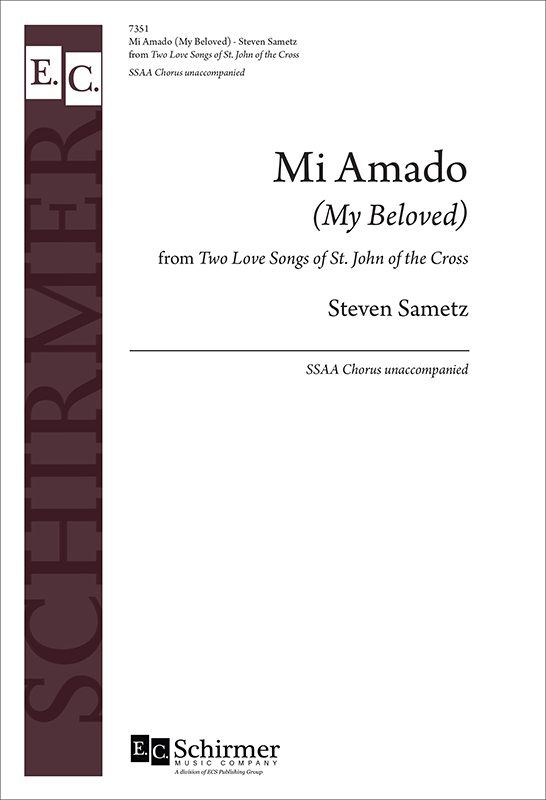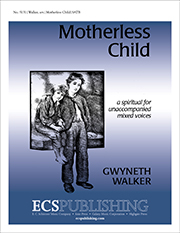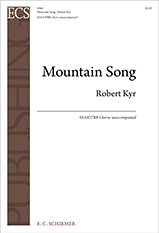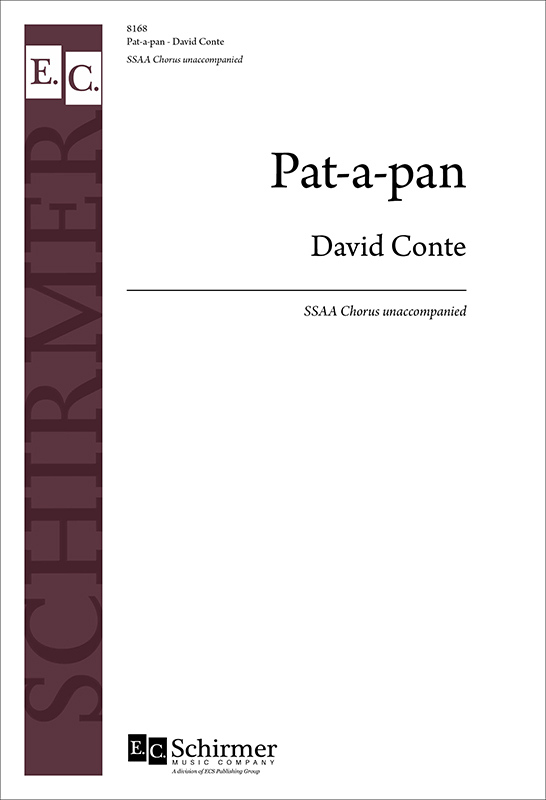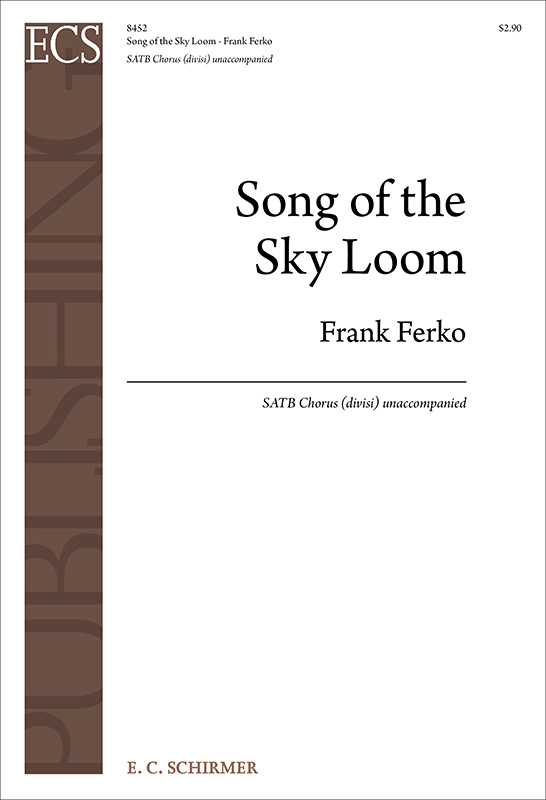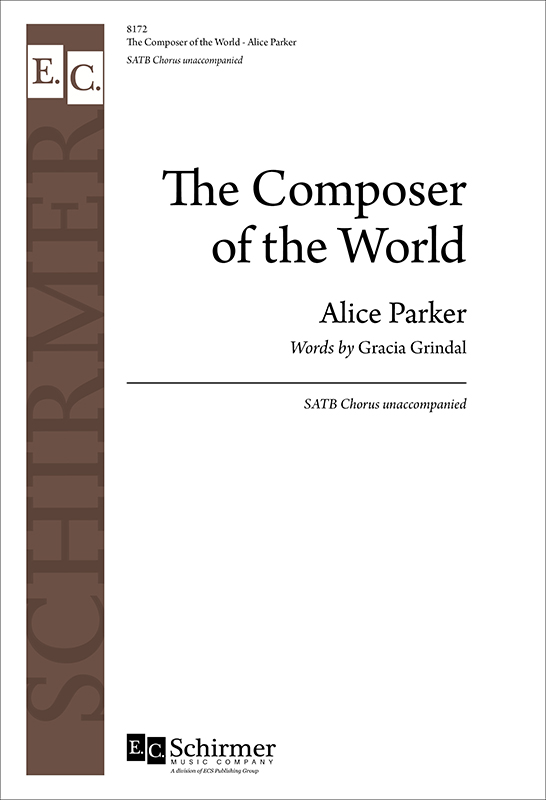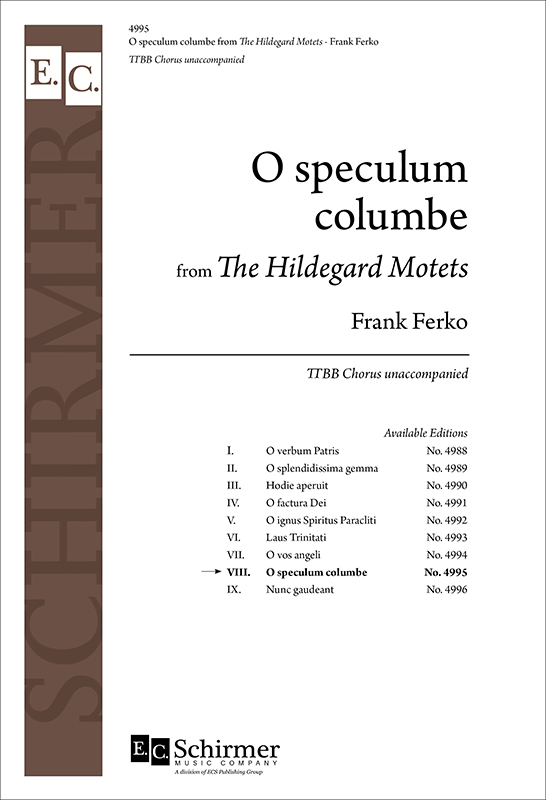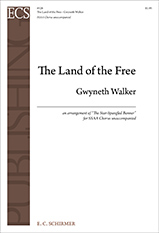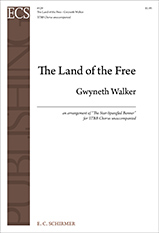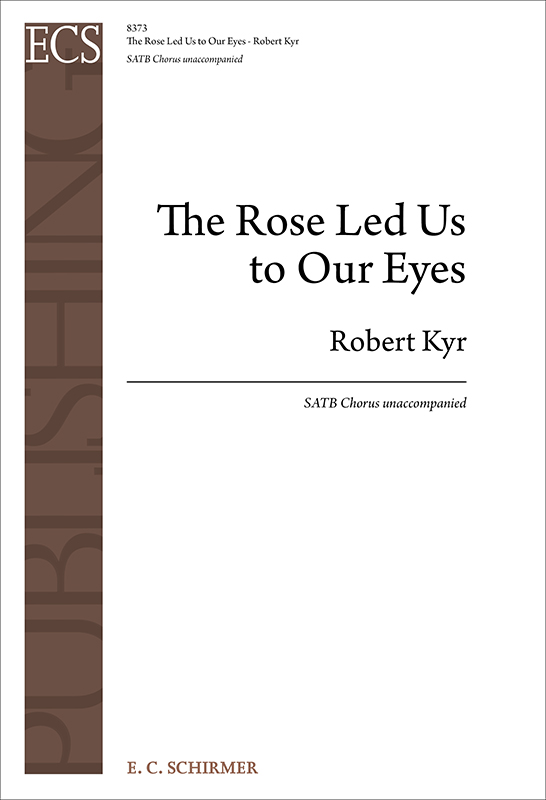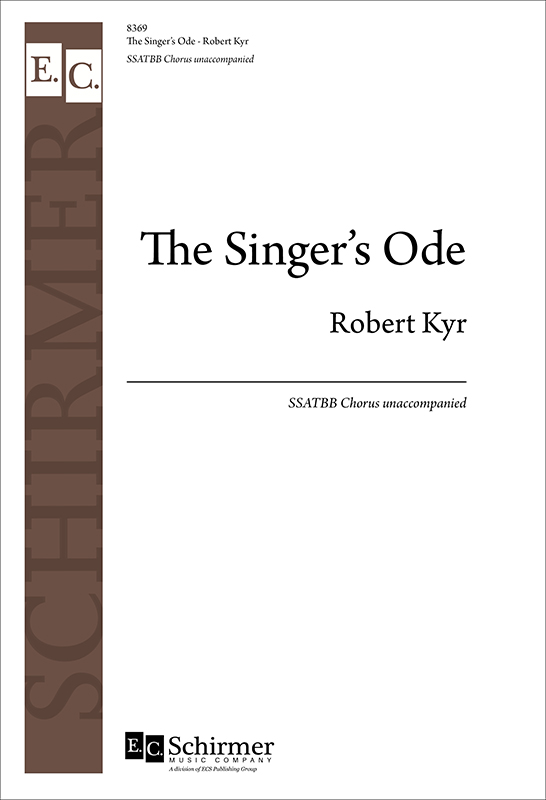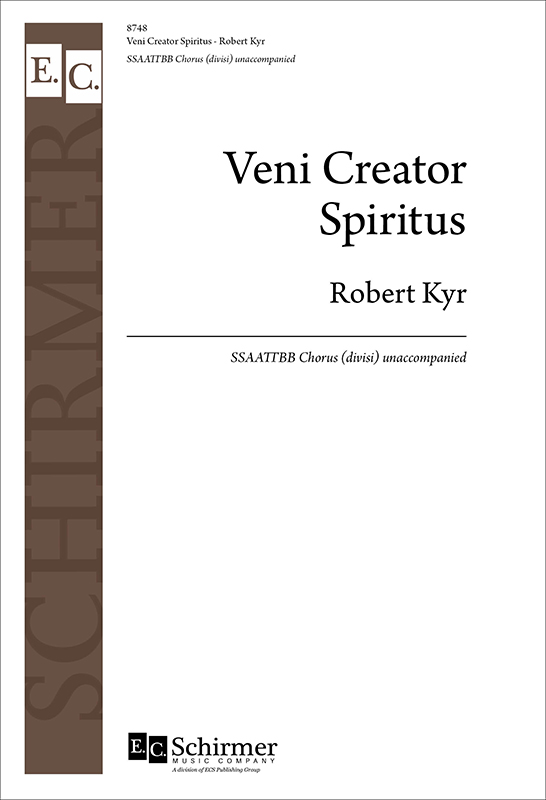In Celebration of the Human Voice - The Essential Musical Instrument
Home | Doo Wop | Barbershop | World | Contemporary | Christian | Vocal Jazz | Choral | Christmas | Instructional | Arrangements
Classical | Opera | Musicals | Personality | Young Singers | Disney | Videos | Songs | The Artists

Sheet Music Series
Schirmer Choral Series
All | SA | SAA | SAB | SATB | SATB divisi | SSA | SSAA | SSAATTB | SSAATTBB | SSATB | SSATBB | SSATTB | TTBB | Unison
Individual Folios
A Cappella
Displaying 1-26 of 26 items.
A challenging work for skilled women's chorus featuring ethereal harmonies and soaring melodies. The soloists' lines are stunning. Duration: 6:00
Composer: Robert Kyr
The text for this piece about the charm of possibilities is a composite of words by Emily Dickinson and Robert Kyr with an excerpt from "In Paradisum" from the Requiem Mass. The music is dramatic, featuring sweeping melodic lines.
Composer: Robert Kyr
Commissioned by Hennepin Avenue United Methodist Church in Minneapolis, Minnesota, to celebrate the service of William H. Mathis, Minister of Music and Fine Arts. It was first performed on June 11, 2017. The noble spaciousness of this wonderful poem by Catherine Cameron is set to original music expressed in the nature of an arpeggio, which can take us to the heights in just an instant. Trumpet calls echo through this arrangement: you'll find them in all the parts. For SATB chorus, sometimes in unison, sometimes in two parts, the piece moves to its soaring conclusion, "Great Creator, give us guidance, Till our goals and yours are one." Duration 2:45
Composer: Alice Parker
If Ye Love Me was composed as a reflective commentary on the well-known motet by Thomas Tallis (1505-1585). Homophony predominates in the first section but with clusters rather than the traditional harmonies used by Tallis. At approximately the midpoint of the piece, the texture is reduced to a very simple four-voice contrapuntal texture as a brief reference to Tallis' style. The chorus then divides into two groups with one group continuing the counterpoint which is now expanded into a more active and complex style. The second group of voices returns to the homophonic style, but now in widely expanded harmonies. Thus, the motet concludes with homophony and counterpoint sounding simultaneously. Duration: 2:00
Composer: Frank Ferko
Commissioned by the Radcliffe Choral Society and the Harvard-Radcliffe Collegium Musicum, this piece was created to celebrate the awakening and life-transforming power of music, as a force that enlivens and enlightens us. The original text is by the composer. Although the original was for women's chorus and mixed chorus, this version is for SSAATBB chorus alone. Extensive instructions are provided for the ethereal aleatoric section, addressing stage placement, dynamics, use of a solo group, and how the piece should end. Duration 4:40
Composer: Robert Kyr
The traditional text with spiritual roots has been adapted by the composer. With an unadorned melody set in a simple but beautiful musical language with open, transparent harmonies, this music can be sung well by groups of many different abilities and in many situations. Duration: 3:00
Composer: Gwyneth Walker
The traditional text with spiritual roots has been adapted by the composer. With an unadorned melody set in a simple but beautiful musical language with open, transparent harmonies, this music can be sung well by groups of many different abilities and in many situations. Duration: 3:00
Composer: Gwyneth Walker
The traditional text with spiritual roots has been adapted by the composer. With an unadorned melody set in a simple but beautiful musical language with open, transparent harmonies, this music can be sung well by groups of many different abilities and in many situations. Duration: 3:00
Composer: Gwyneth Walker
For SSAATTBB chorus, this original setting of the Christina Rossetti text is rich, sustained and gracious. Challenging but satisfying to learn and sing.
Composer: Rene Clausen
Set to the poetry of the 16th-century Spanish Carmelite priest, San Juan de la Cruz, this piece (and its companion, 7351) can read as secular love songs. Actually, however, they are religious allegory. "Luz y amor" ("Light and Love") appears to be about "a solitary bird," but contains five pieces of advice for those seeking a deeper relationship with God: always be aware of God's presence; strip away everything that is not God; be open and listen for the voice of the Holy One; let go of your own ambitions and attachments; and sing sweetly of the delight of Love. Duration: 2:30
Composer: Steven Sametz
Set to the poetry of the 16th-century Spanish Carmelite priest, San Juan de la Cruz (St. John of the Cross,) this piece (and its companion, 7350) can appear to be a secular love song. But it is actually religious allegory in which the Soul is singing to God. He is strong and magnificent as a mountain; comforting as the cool, shady woods; filled with unexpected delights like an exotic island; possesses her powerfully like a roaring river; thrills her with a touch like a breeze on the skin; fills her and satisfies her like a delicious meal; opens her eyes to the unexpected, like the dawn. As they rest together in the tranquil night, the soul delights in these feelings like being filled with glorious music that can truly be heard only in silence. In that moment, we are given a luxurious silence, surrounded by gorgeous music, in which we, too, may simply breathe, delight and rest in the presence of Love. Duration: 2:30
Composer: Steven Sametz
"Motherless Child" is derived, in part, from the African-American spiritual "Sometimes I Feel Like a Motherless Child." The original song dates back to the era of slavery when it was common practice to sell children of slaves away from their parents. In this new adaptation, the theme of separation or alienation (away from home, apart from one's community is viewed as universal and eternal. Everyone at some time feels like a "motherless child." But as one expresses these feelings, one realizes a common bond with humanity. And one is no longer alone. Thus a more hopeful refrain is woven into the lyrics of the spiritual:"Hold on. Hold on, We are together. And we are one."
Composer: Gwyneth Walker
This setting of words by Chinese poet Tu Fu as translated and adapted by Robert Kyr features harmonies and melodies that invoke a mountainous landscape. The lyrics also deal with nature and the human condition. Duration: 5:00
Composer: Robert Kyr
This carol concerns the birth of Jesus Christ, and is told from the perspective of shepherds playing simple instruments- flutes and drums- the onomatopoetic sound of which gives the song its name. "Pat-a-pan" is meant to mimic the sound of the drum, and an accompanying lyric, "tu-re-lu-re-lu," the flute.
Composer: David Conte
An extended SSAA setting of Sara Teasdale's poem, was commissioned by the Peninsula Women's Chorus(California) and aptly expresses the noble sentiment"If I can sing, I am free."
Composer: Libby Larsen
Adapting the text from the James Whitcomb Riley poem A Song of Singing, here is a song for men that celebrates the joy and exuberance of singing. With a fast and jazzy feel, the men sing some words but mainly they sing worldless sounds to capture the energy of the text.
Composer: Kirke Mechem
"In the summer of 2011, while I was visiting my friends Don and Sally Roberts in Santa Fe, Sally asked me if I would be interested in writing a new choral work for Don in celebration of his upcoming 75th birthday. The idea appealed to me very much, so I readily agreed to write the piece. Since Don has enjoyed a lifelong interest in the American Southwest Pueblo people and their customs, Sally provided me with several Tewa texts, in English translation, to consider for musical setting. I was particularly drawn to the imagery of Song of the Sky Loom, so that poem became the basis for the new work.
The music begins with two baritone soloists singing an introductory 'call-and-response' to which the entire chorus eventually responds. The opening line of text is first presented in fragmented form, as if voices from all areas of nature gradually rise up and then merge into a unified chordal texture. As the text turns to the imagery of weaving, the musical texture, accordingly, bec
Composer: Frank Ferko
"I loved this poem the moment I first read it, imagining a God who dwelt in music, creating the world and us in a universe of swirling sound. Gracia Grindal was referring to Norwegian composer and personal friend Nils Henrik Asheim as she wrote, but the larger view is easily drawn. The whole work is a meditation on creative power, the wonders inside everything 'ordinary.' Our 'stone deaf ears' should be awakened as we sing and listen." -Alice Parker
Composer: Alice Parker
The Hildegard Motets comprise a cycle of nine unaccompanied choral motets using texts by the 12th century abbess Hildegard von Bingen (1098-1179). The texts were extracted from Hildegard's opus of more than seventy sacred poems titled Symphinia armonie celestium revelationum. Although these poems have been translated into English (more than once) and some of the translations are quite brilliant, I chose to set the original Latin texts as I felt they remained closer to Hildegard's own thoughts. The nine poems used in this cycle were selected according to their appropriateness to seasons in the Christian liturgical caldendar (thus, most of them can be sung in specific liturgical settings) and to their appropriateness to the structured plan of this cycle as well as for their sheer poetic beauty. Hildegard's poetic vocabulary was unusual and unique; she frequently used language that is not found in standard Latin liturgical texts. As with the musi
Arranger: Frank Ferko | Composer: Hildegard von Bingen
Gwyneth Walker has created a rousing a cappella arrangement of the
Composer: Gwyneth Walker
Gwyneth Walker has created a rousing a cappella arrangement of the
Composer: Gwyneth Walker
The Rose Led Us to Our Eyes is a setting of a text by poet Ghalib (1797-1869) as adapted by the composer. The music is relatively uncomplicated and mellifluous. Duration: 3:00
Composer: Robert Kyr
Like Robert Kyr's "Ode to Music" (#8368, TBB), "The Singer's Ode" is another homage set to music with words and music by the composer. This one features sweeping melodies and rich harmonies culminating in an easy-to-perform aleatoric passage at the close.
Composer: Robert Kyr
A chromatic and engaging choral fanfare for Palm Sunday, paired with an introspective setting of the 6th-century text Crux fidelis, translated into both English and Spanish. Momentum is achieved by the alternation of long, lyrical phrases with short ones punctuated by figures in the original Latin.
Includes:
I. Hosanna Fanfare
II. Faithful Cross (O Cruz Fiel)
Composer: Leo Nestor
A setting of a composite text by the composer which combines passages from a variety of sources: the Requiem service (Dies irae, Libera me), the Mass (Agnus Dei qui tollis, Agnus Dei dona nobis pacem), and from a hymn attributed to the Benedictine theologian Maurus (776-856) "Veni Creator Spiritus." The images of destruction that begin the work are gradually transformed through an invocation of the energies of creation, as the music of the first half (in minor mode) dissolves into the bright music of the conclusion (in major mode). Duration 5:40
Composer: Robert Kyr
![]() Vocal Harmony Arrangements - Home
Vocal Harmony Arrangements - Home
Christian | Gospel | Standards | Musicals | Specialty | World | Barbershop | Contemporary | Vocal Jazz | Choral | Christmas
Mixed Voices | Female | Male | 8 Parts | 6 Parts | 5 Parts | 3 Parts | 2 Parts | Medleys | Solo | Folio Series | New Releases
Select a Category |
Want to Sing? - Find a Chorus Near You
List of Choruses by State | List of Choruses by City



